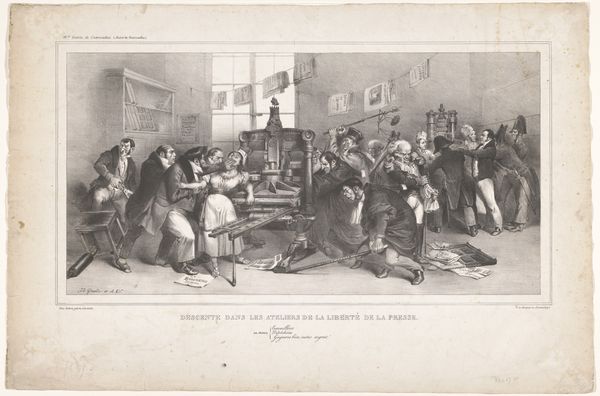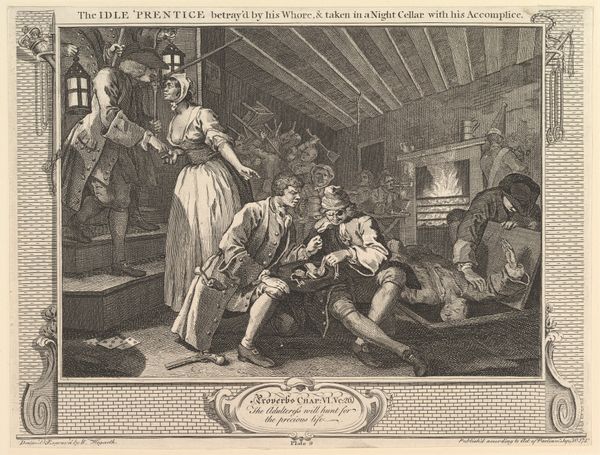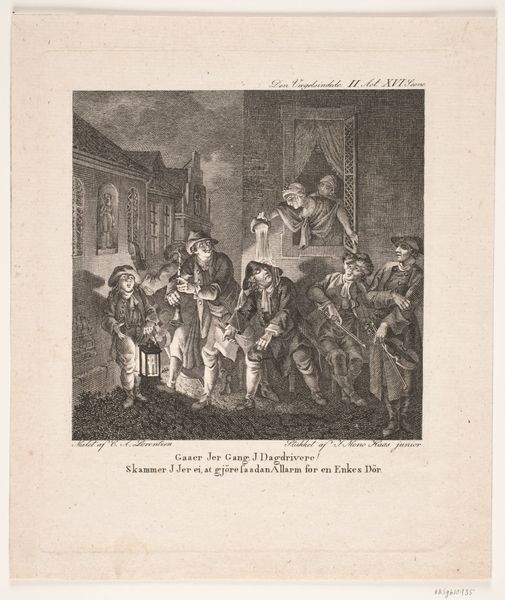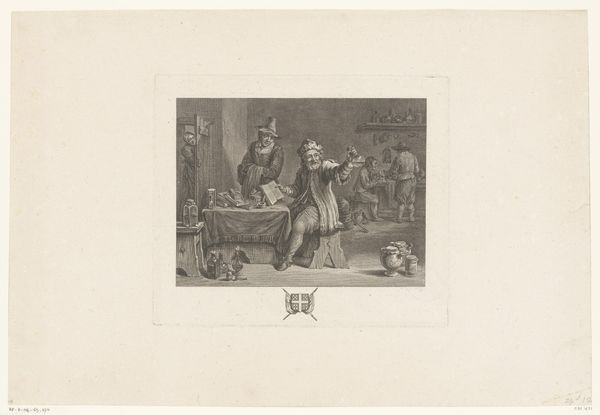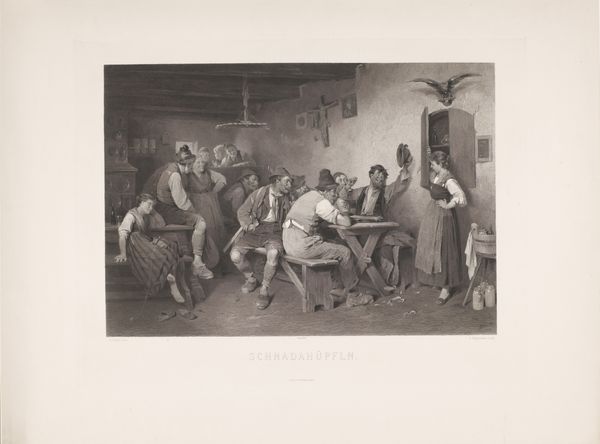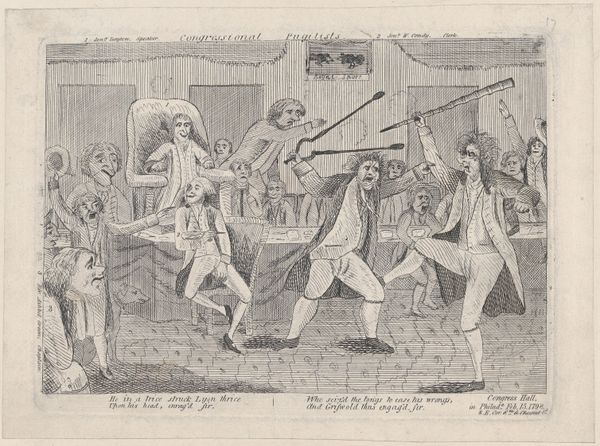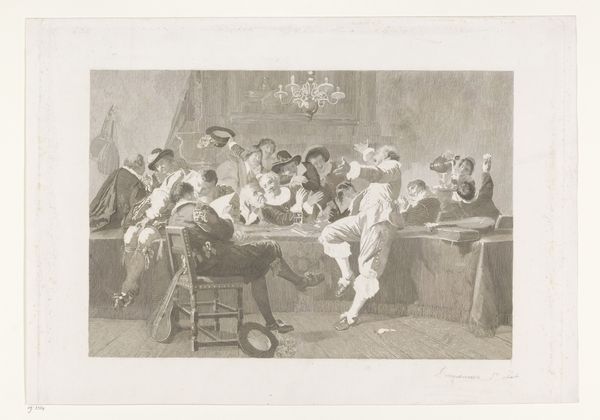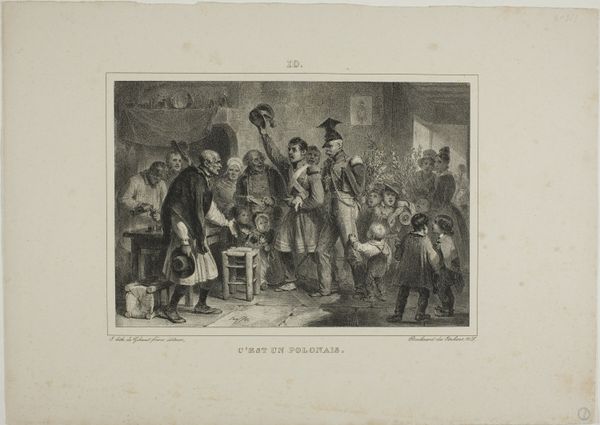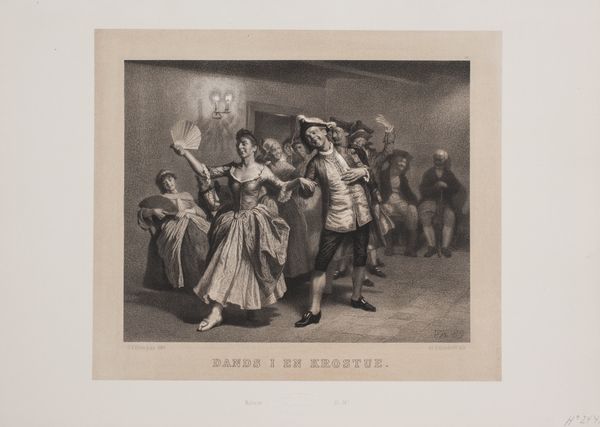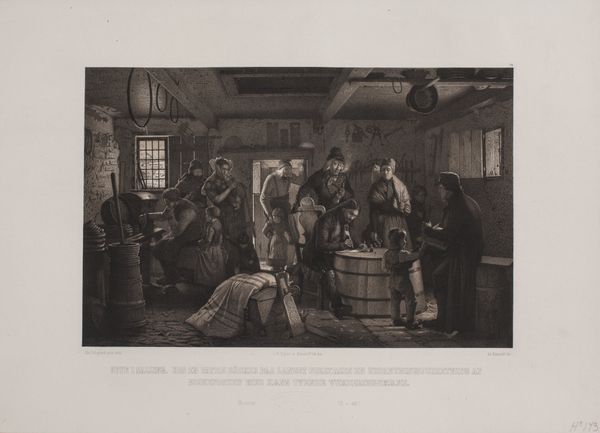
lithograph, print
#
portrait
#
medieval
#
lithograph
# print
#
genre-painting
Dimensions: 285 mm (height) x 400 mm (width) (billedmaal)
Editor: Here we have "Danish Artists in Osterien la Censola in Rome," a lithograph from the 1880s by Adolph Kittendorff, currently held at the SMK. There is a lot going on, it’s bustling! What’s your take? Curator: What strikes me immediately is the explicit staging of artistic community within the piece. Genre paintings such as these often functioned less as accurate records and more as constructed ideals. It is interesting to ask, who is this image intended for? Editor: Good question! My first thought would be other artists… Maybe as inspiration, or aspiration? What makes you focus on its function as a constructed ideal? Curator: Notice how Kittendorff has carefully grouped and characterized the figures, there are several families to the left and a lively group of artists congregating to the right. This division isn’t necessarily natural, but carefully arranged to evoke a particular sense of artistic life, which is intended for public consumption. This creates a particular public persona of the "artist" which has interesting implications on society and politics at the time. Why place these artists in Rome specifically, as opposed to Denmark, for example? Editor: That's fascinating, it's like Kittendorff is selling an image, not just of artists, but of the whole lifestyle surrounding art-making at the time. Do you think that this romantic view affected artistic patronage at all? Curator: It very likely did. The ideal of the artist abroad, learning from the masters in a historic location such as Rome, surely resonated with potential patrons. Editor: I see your point, thinking about it like that really makes me think differently about the art and the purpose that it served for people outside of the picture. Curator: Exactly. Analyzing art is like archaeology, layers of history informing what art actually means at any given moment in time.
Comments
No comments
Be the first to comment and join the conversation on the ultimate creative platform.
